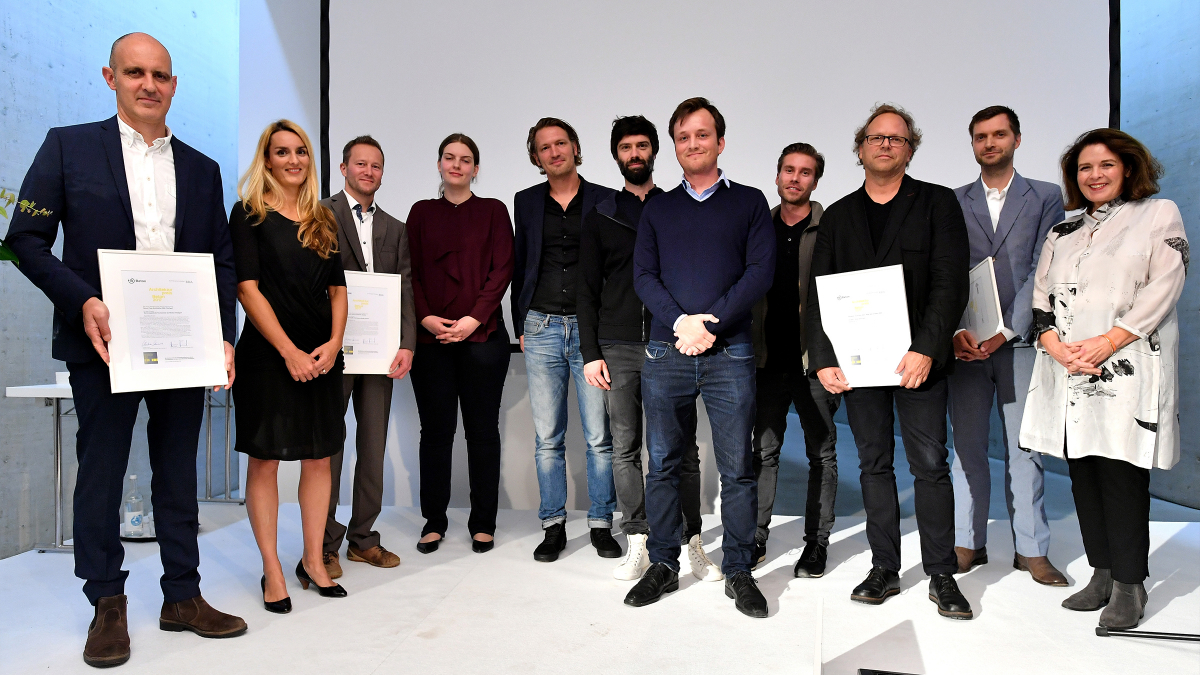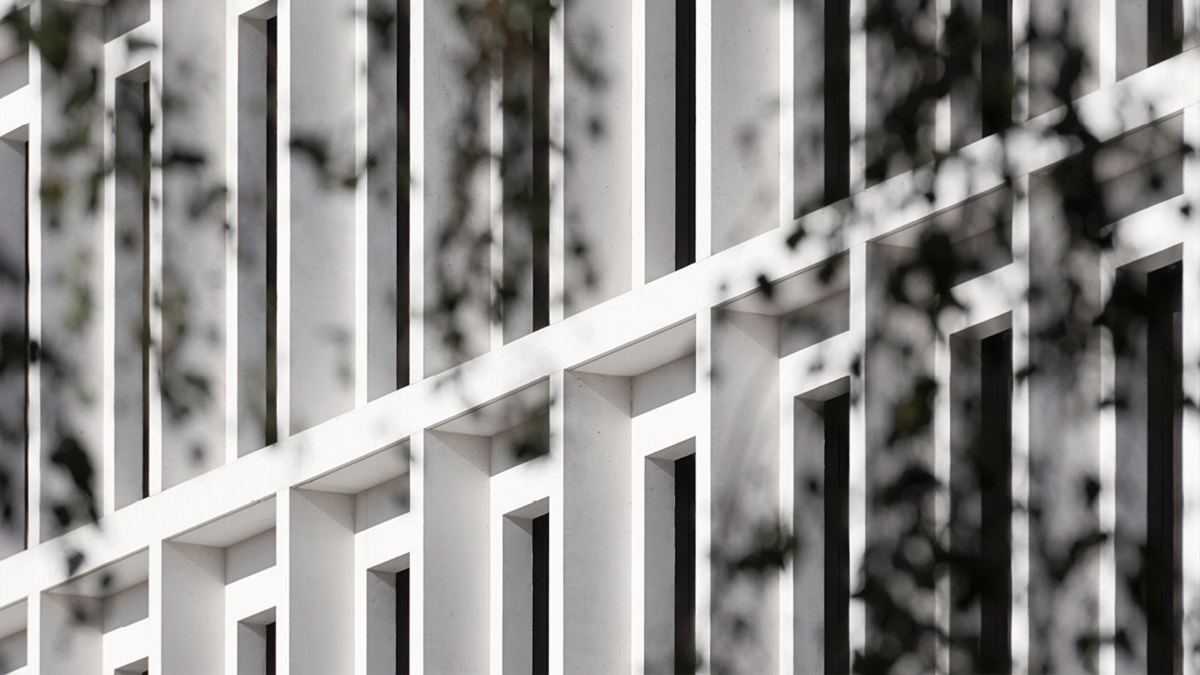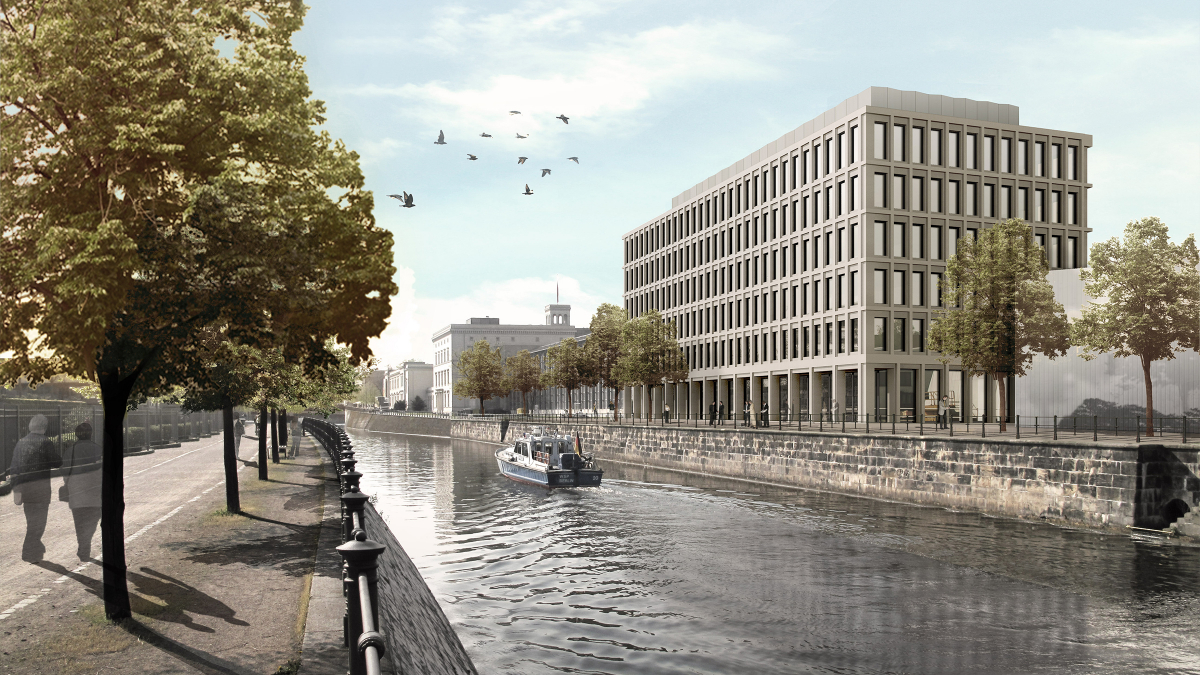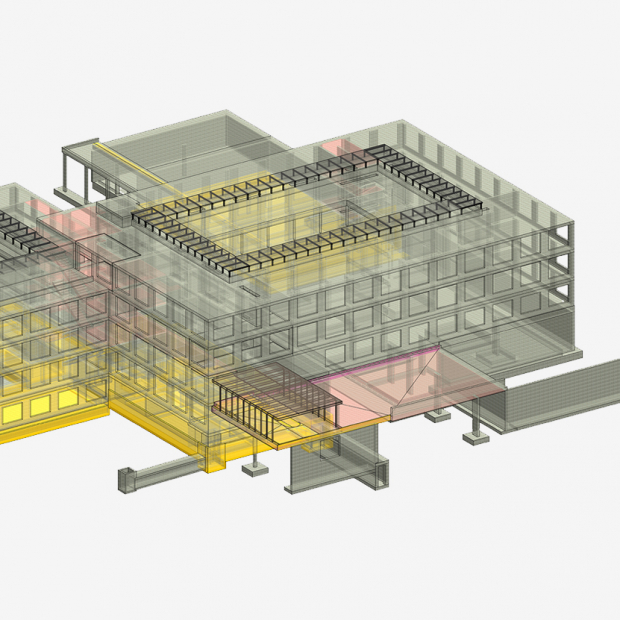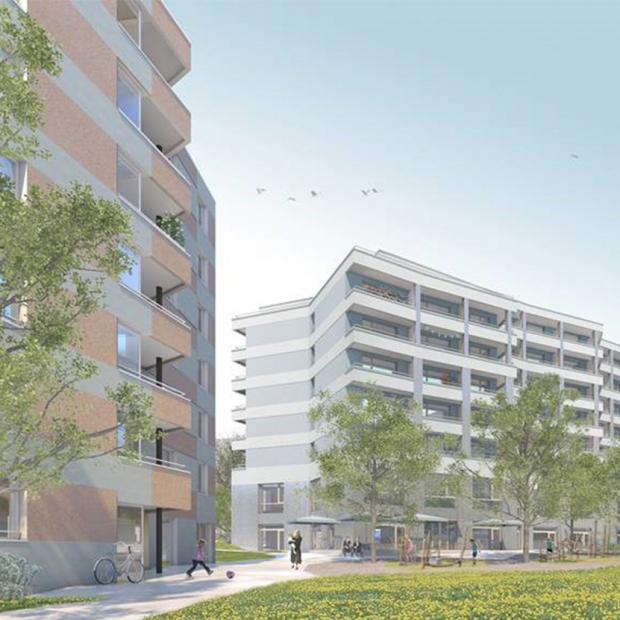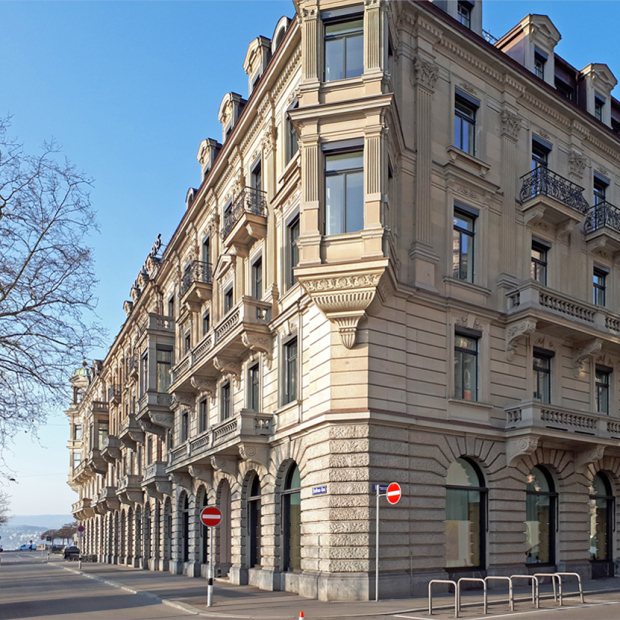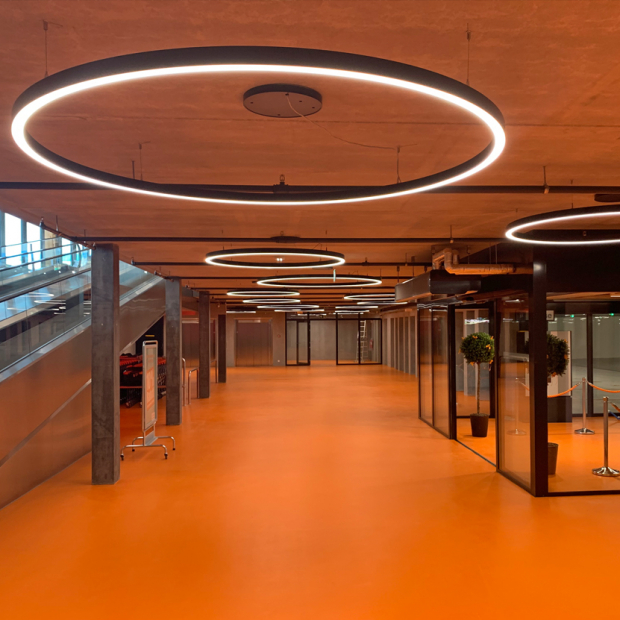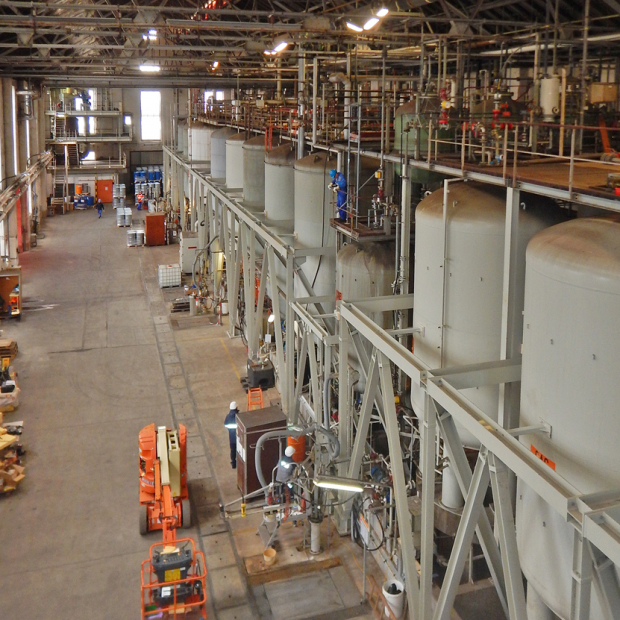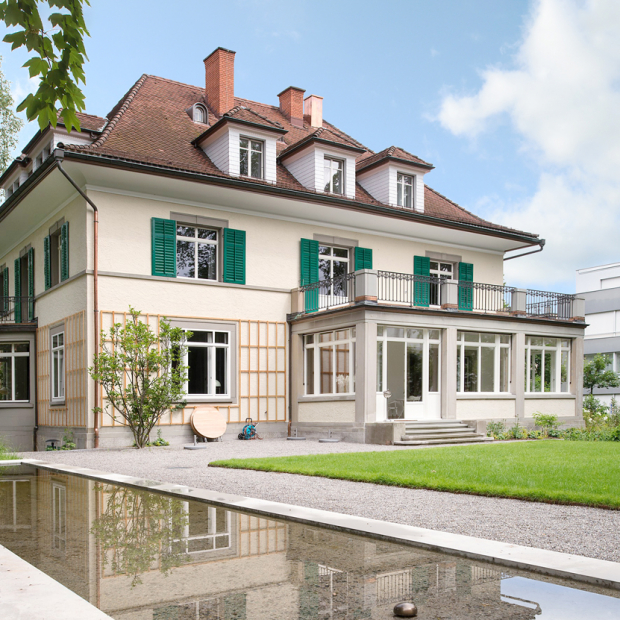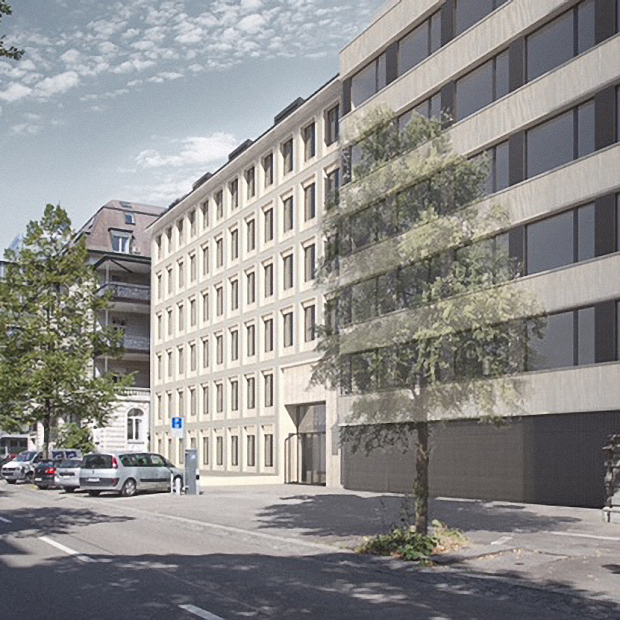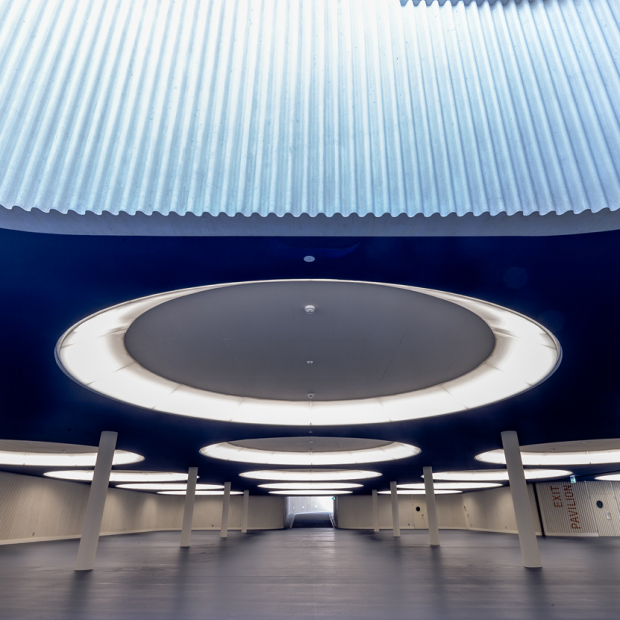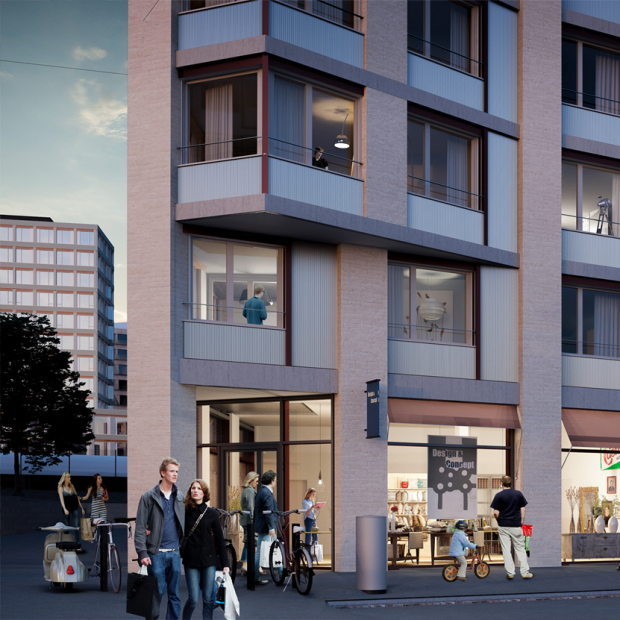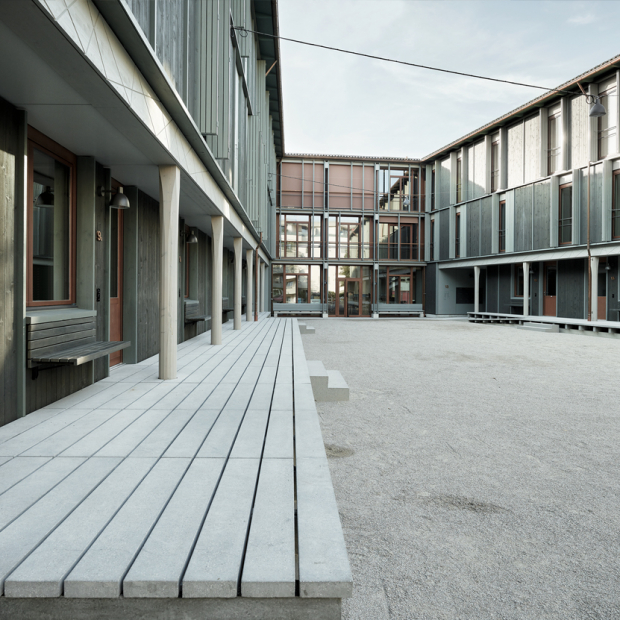
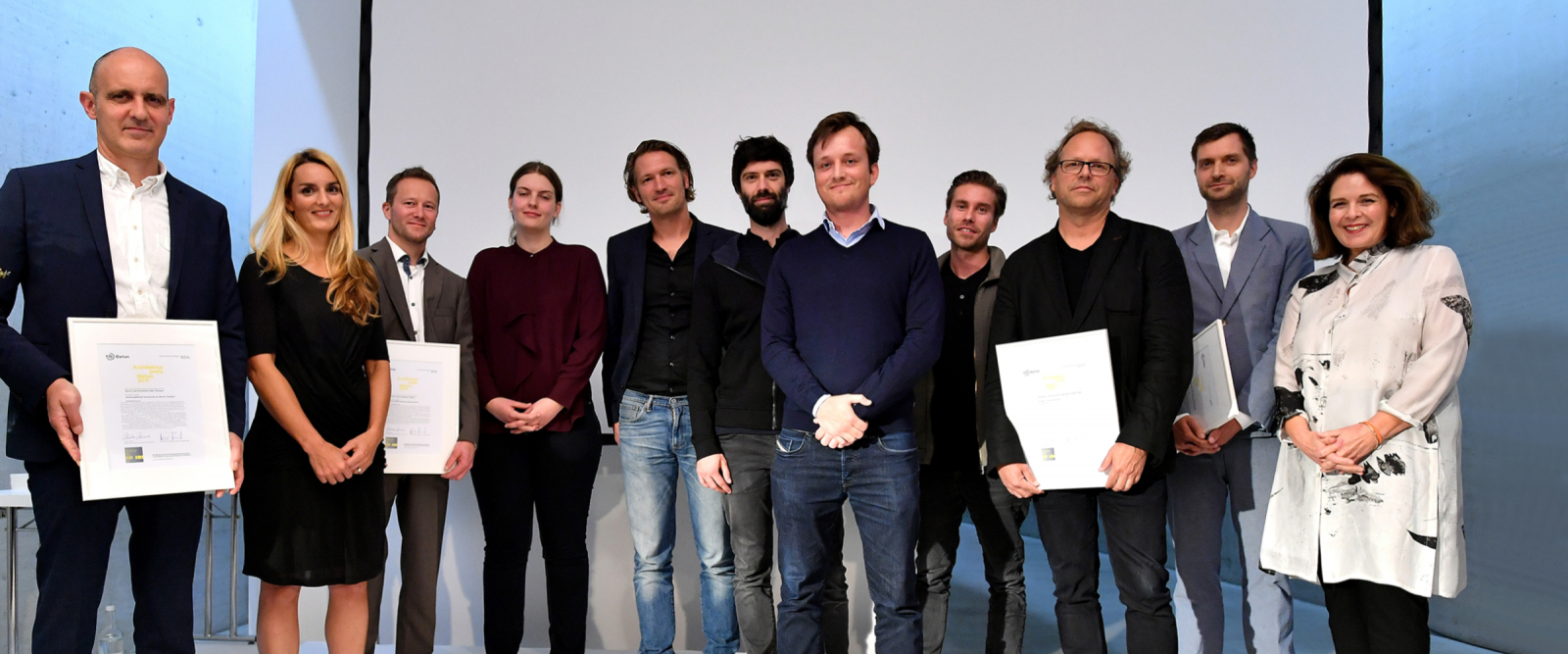
EBP office building in Berlin wins architecture prize for concrete structures
Located next to Hamburger Bahnhof in Berlin, the EBP office building was one of 8 structures out of a field of 170 competition entrants to win a honorable mention for distinguished concrete design in the biannual German design competition known as Architekturpreis Beton 2017. Members of the architectural team at Miller & Maranta and Thomas Espinosa of EBP Schweiz’s Structural Planning division were on hand to receive the prize on behalf of all participants.
The prizes for the best concrete structures built in Germany were conferred for the twentieth time in the fall of 2017. Sponsored by the InformationsZentrum Beton in cooperation with the Association of German Architects (BDA), the purpose of the prizes is to recognize outstanding works of architecture and engineering, works whose quality reflects the creative, structural and technological potential afforded by concrete as a building material. The EBP office building, “Am Hamburger Bahnhof” was one of only 8 projects from a field of 170 submissions to win one of the prestigious honorable mentions for concrete structures.
Jury selection criteria
The Swiss architectural firm Miller & Maranta realized a striking office and gallery building at a challenging location on the Berlin-Spandau Ship Canal in the district of Berlin-Mitte. The building’s interior is unified by a central stairway that opens onto all stories and functions as a communication zone. Branching walls join the stairway and provide access to all adjoining rooms. The building’s versatile load-bearing structure accommodates a variety of different uses, including office landscapes, combination offices and individual rooms.
The exterior distinguishes itself in terms of its sophisticated use of location-specific properties. The elongated structure features various sculpted elements along its wings that serve to mediate between the Berliner Kunsthalle and the former railway station. The station-side façade is elegant with graceful vertical elements and strong horizontal elements while the representative canal-side façade projects stately and monumental character with its ground-level arcade and more massive vertical elements.
The concrete façade is rendered as a seamless post-and-beam construction that is positioned in front of the actual building envelope with which it is connected at only a few points for purposes of energy efficiency and structural integrity. This gives rise to a monolithic and self-supporting three-dimensional structure that successfully showcases the high quality of Swiss architectural design in concrete.
Book featuring the distinguished works
The Germany-based publishing house Ernst Wasmuth Verlag has published a book featuring the prize-winning works. Entitled “Beton” (“Concrete”), the book extensively documents the works of the 2017 design competition’s four prize recipients and four honorable mentions, and also offers a brief photographic exposé of all of the shortlisted projects.
Exemplary cooperation of all participants
The planning and the construction of such concrete buildings differ in many respects from conventional shell constructions. Given that concrete is required to account for more than just structural functions, its use as a building material introduces extraordinary complexity. Without the technical knowledge, craftsmanship and experience of all of those participating in the construction, the successful realization of such a building would not have been possible. This is why a team of specialists for exposed concrete was assembled at an early project stage. The team included concrete specialists, civil engineers, architects, construction foremen, formwork planners, site managers and concrete suppliers. The efforts of these various specialists needed to be brought into careful alignment with one another which required their involvement already in the planning stage. The concrete façade was completed in many stages in parallel with the main load bearing structure. Given that its surface is left untreated, any blemishes literally remain cast in concrete. To account for this, a mock-up, involving a 1-to-1 representation of on-site conditions, was completed before the actual construction. This exercise provided crucial information relating to the details of reinforcement, formwork and overall application.
The exemplary cooperation of the various participants, evidenced by their tangible joy in being able to work on something so unique, was essential for the success of the project and its impressive outcome.
